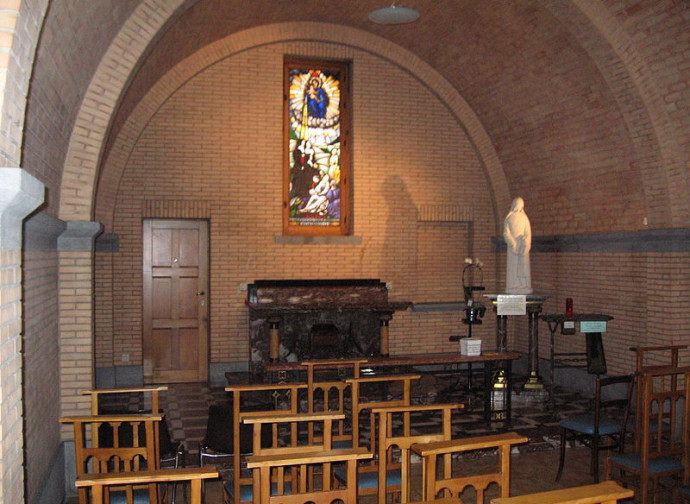Saint Julia Billiart
Julia Billiart (1751-1816), a French woman, was the founder of an institute rich in vocations, the Sisters of Notre Dame of Namur. From an early age she had such a relationship with God that the bishop of Ghent, Monsignor Maurice de Broglie, told the saint that she had saved more souls through sharing her rich interior life with the nuns than through the rest of her fervent apostolic activity.

Julia Billiart (1751-1816), a French woman, was the founder of an institute rich in vocations, the Sisters of Notre Dame of Namur. From an early age she had such a relationship with God that the bishop of Ghent, Monsignor Maurice de Broglie, told the saint that she had saved more souls through sharing her rich interior life with the nuns than through the rest of her fervent apostolic activity.
Sixth of seven children, she received a basic education, but when she was only seven she already knew the Catechism by heart. She loved to gather the other children around her to recite and share with them the contents of the faith. At the age of 14 she took a vow of chastity. Because of her virtues, already in her youth she was called “the saint of Cuvilly”, her hometown in the region of Upper France. Her entrustment to God grew over the very hard years of physical trials. In 1774 she suffered a nervous shock, due to a gunshot fired at her father by a stranger, perhaps a business rival. At the age of 31, due to a badly treated illness, her lower limbs were paralyzed. During this period Julia received the Eucharist daily and developed such a desire for prayer that she devoted 4-5 hours a day to contemplation of God. The rest of the time she helped the parish by making altar cloths and teaching the Catechism to the children of the village, who gathered around her bed.
During the French Revolution she was accused by the revolutionaries of offering protection to “refractory” priests, i.e. those who had remained faithful to God by rejecting the Civil Constitution of the Clergy. She was thus forced to take refuge in Amiens, where she met Françoise, the pious countess of Gizaincourt who had escaped The Terror, and Father Joseph Varin (who would be among the major protagonists of the Jesuit Restoration). This priest urged her to found an institute for the Christian education of girls. In 1803 Julia began to lead a communal life with other women who wanted to consecrate themselves. The first to benefit were eight orphans. On June 1, 1804, the feast of the Sacred Heart of Jesus, 22 years after her paralysis, the saint miraculously regained the use of her legs, following a novena made in obedience to her confessor. On October 15 of the same year, Julia and three other companions, including Françoise, pronounced the first vows of the new-born congregation of the Sisters of Notre Dame. The first, far-sighted statutes of the new institute were written by Father Varin.
In the absence of the latter, the saint had to leave Amiens to avoid the changes to the statutes that the community's confessor, who in turn had managed to influence the local bishop, wanted to make. At the invitation of the bishop of Namur, where Julia had already founded a house under the guidance of Mother Saint Joseph (Françoise), the Belgian city became the centre of the institute, which then assumed its present name. In her 12 years as Superior General, the saint travelled a great deal, founding 15 convents and several schools, and maintaining an extensive correspondence with her spiritual daughters, now spread over four continents. She received the gift of ecstasy and of performing miracles while still on earth, thanks to her faith in Providence. Indeed, this is how her days began: “When I wake up, what immediately presents itself to me is a feeling of admiration and gratitude for the goodness of God who will give me another day to glorify Him”.




